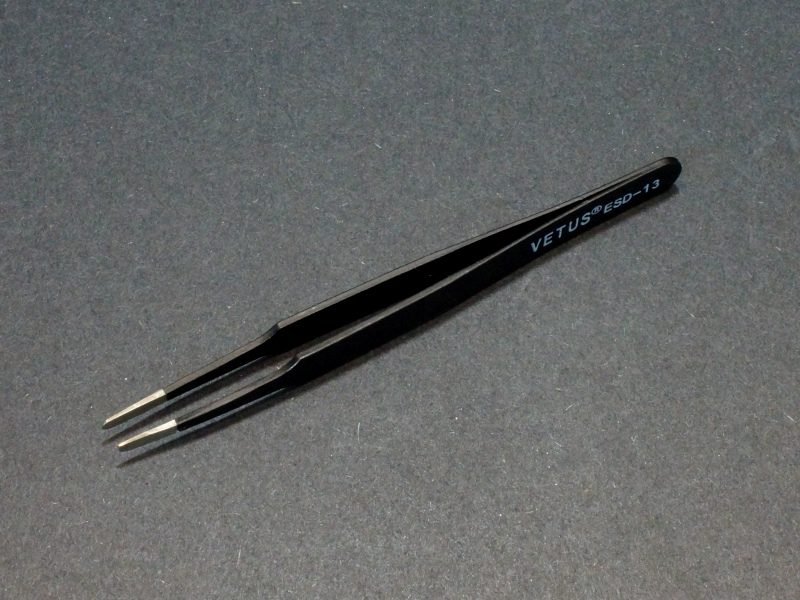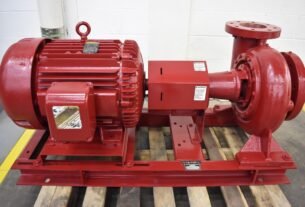ESD tweezers are specialized tools designed to handle electronic components without causing electrostatic discharge (ESD). ESD can damage sensitive electronic parts, leading to malfunction or failure. In electronics assembly and repair, it is crucial to use ESD-safe tools to prevent this type of damage. ESD tweezers are made from materials that prevent static electricity from transferring to the components, ensuring that they remain intact during handling.
These tweezers are essential for anyone working in electronics, from hobbyists to professionals. They help in assembling, repairing, or testing electronic devices where precision and protection are paramount. By using ESD tweezers, you reduce the risk of static buildup, which can be harmful to delicate circuits. This guide will provide insights into the types of ESD tweezers available, how to choose the right one, and best practices for their use and maintenance.
Understanding ESD and Its Impact
What is Electrostatic Discharge (ESD)?
Electrostatic discharge (ESD) occurs when static electricity is released suddenly from one object to another. This discharge can cause damage to electronic components, leading to failures or malfunctions. ESD is a common issue in electronics because even a tiny static shock can be enough to disrupt sensitive circuits. Understanding ESD is crucial for anyone working with electronic devices, as it helps in taking necessary precautions to protect components.
How ESD Affects Electronic Components
Electronic components, especially those with integrated circuits (ICs), are highly sensitive to static electricity. An ESD event can cause immediate damage, such as a short circuit or burning of the internal circuitry. It can also lead to latent failures, where components might work intermittently before completely failing. This kind of damage is often invisible to the naked eye but can significantly impact the reliability and performance of electronic devices. Preventing ESD damage is therefore a key aspect of electronics manufacturing and repair.
Types of ESD Tweezers
Plastic ESD Tweezers
Plastic ESD tweezers are made from conductive plastic materials that prevent static build-up. They are commonly used in environments where static control is essential, such as in clean rooms or assembly lines. These tweezers are lightweight, corrosion-resistant, and offer good grip and control. They are ideal for handling sensitive electronic components where minimal force is required. However, they might not be suitable for tasks that require high precision or heavy-duty use.
Metal ESD Tweezers
Metal ESD tweezers are made from materials like stainless steel with special coatings to prevent static charge accumulation. These tweezers offer superior strength and precision, making them suitable for tasks requiring fine control. They are often used in environments where durability and high performance are necessary. The conductive coating helps in grounding any static charge, ensuring that it does not affect the electronic components. Metal ESD tweezers are preferred for their robustness and accuracy in handling delicate parts.
Carbon Fiber ESD Tweezers
Carbon fiber ESD tweezers combine the benefits of lightweight construction and durability. They are made from carbon fiber composite materials that provide high strength while being resistant to static electricity. These tweezers are known for their excellent grip and precision, making them suitable for intricate work. They are also resistant to chemicals and wear, offering a long-lasting tool for various electronic handling tasks. Carbon fiber ESD tweezers are a good choice for professionals seeking both performance and durability.
Key Features to Look for in ESD Tweezers
Material and Build Quality
When selecting ESD tweezers, the material and build quality are critical factors. High-quality materials like conductive plastic, stainless steel, or carbon fiber ensure that the tweezers effectively prevent static discharge while providing durability. The build quality affects the tool’s precision and longevity, so investing in well-made tweezers is essential. Look for features such as non-slip grips and precise tip alignment to enhance the usability and effectiveness of the tweezers.
Tip Design and Precision
The tip design of ESD tweezers plays a significant role in their performance. Precision tips allow for accurate handling of tiny components, which is crucial for tasks that require high detail. Tweezers with different tip shapes—such as pointed, flat, or angled—cater to various needs. Choosing the right tip design based on the specific application ensures better control and reduces the risk of damaging sensitive parts.
Grip and Comfort
Comfort and ease of use are important considerations when choosing esd tweezers. A good grip reduces hand fatigue during extended use and enhances control over delicate tasks. Ergonomic designs and padded handles can contribute to a more comfortable experience. Make sure the tweezers fit well in your hand and provide a firm, comfortable grip to avoid accidental slips or pressure on sensitive components.
How to Choose the Right ESD Tweezers for Your Needs
Considerations for Different Applications
Different applications require different types of ESD tweezers. For general handling of electronic components, a versatile set of tweezers with various tip shapes may be sufficient. For specialized tasks, such as precision assembly or fine soldering, more specific tweezers with fine tips or special coatings might be necessary. Evaluate the tasks you perform most frequently and select tweezers that best match those needs.
Matching Tweezers to Specific Tasks
To ensure optimal performance, match the tweezers to the specific tasks you need to perform. For example, use fine-tipped tweezers for placing tiny components on a circuit board, and broader-tipped tweezers for holding larger parts. Consider the environment in which you work, such as whether you need additional protection from chemicals or static buildup. Choosing the right tweezers based on the task can improve efficiency and reduce the risk of damage.
Proper Use and Maintenance of ESD Tweezers
Best Practices for Handling ESD Tweezers
Proper handling of ESD tweezers is crucial to maintain their effectiveness and extend their lifespan. Always use the tweezers by gripping them near the base and avoid squeezing too hard. Handle them gently to prevent bending or damaging the tips. When working with sensitive components, ensure that your hands are clean and dry to prevent any additional static buildup. Using tweezers with care helps in achieving precise results and maintaining their ESD properties.
Cleaning and Storing ESD Tweezers
Regular cleaning and proper storage are essential for maintaining the performance of ESD tweezers. Clean the tweezers with a soft, non-abrasive cloth and avoid using harsh chemicals that might damage the coating or material. Store the tweezers in a designated case or holder to prevent accidental damage or contamination. Keeping them in a clean, dry environment ensures that they remain effective and ready for use when needed.
Common Mistakes to Avoid with ESD Tweezers
Using Non-ESD Safe Tools
One common mistake is using non-ESD safe tools in environments where static control is crucial. Using regular tweezers or other non-static-controlled tools can lead to accidental discharge and damage to electronic components. Always use ESD-safe tools to ensure that you are protecting sensitive parts from static electricity. Investing in the right tools is essential for maintaining the integrity of electronic devices.
Neglecting Regular Maintenance
Neglecting regular maintenance of ESD tweezers can lead to decreased performance and potential damage. Regularly check the condition of the tips, grips, and overall construction of the tweezers. Replace or repair any damaged parts promptly to avoid compromising their functionality. Routine maintenance helps in ensuring that the tweezers remain in good working condition and continue to provide effective static protection.
Conclusion
In summary, ESD tweezers are vital tools for anyone working with electronic components. Understanding the types available, key features, and proper use can help in selecting the right tweezers for your needs. By adhering to best practices for handling and maintaining ESD tweezers, you can ensure their effectiveness and longevity. Choosing the appropriate tweezers and using them correctly will protect your electronic components from static damage and enhance your work’s precision and efficiency.




